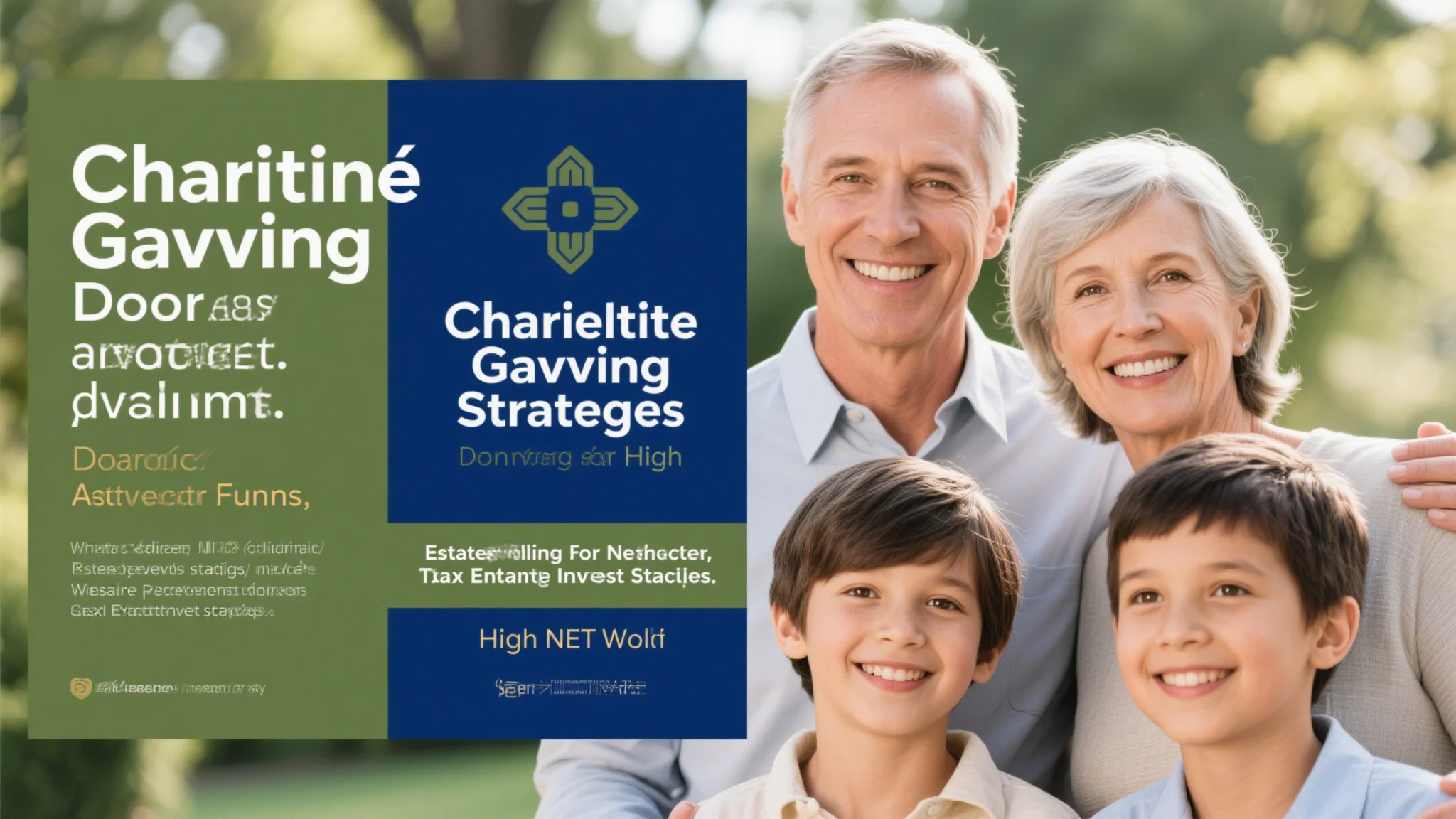
Charitable Giving Strategies for High-Net-Worth Families
Strategic Philanthropy for Multi-Generational Impact
Sophisticated charitable giving strategies have become integral components of comprehensive wealth management for affluent families. These approaches extend far beyond simple check-writing to incorporate sophisticated tax planning, family legacy building, and measurable social impact. Modern philanthropic planning begins with clarifying family values and objectives, then structures giving vehicles to maximize both financial efficiency and mission effectiveness.
When coordinated with comprehensive estate planning for high-net-worth individuals, charitable strategies can significantly reduce transfer tax exposure while creating lasting family legacies. The most effective implementations align giving timelines with income fluctuations and asset appreciation cycles to optimize tax deductions. Professional advisors play crucial roles in helping families navigate the complex interplay between charitable intent and financial planning objectives.
Maximizing Flexibility with Donor-Advised Funds
Contemporary donor-advised funds offer unparalleled convenience and tax efficiency for families exploring their philanthropic identities. These vehicles allow donors to claim immediate tax deductions for contributions while maintaining advisory privileges over subsequent grantmaking. The most strategic implementations bunch multiple years’ worth of charitable deductions into single tax years when itemized deductions provide maximum benefit, particularly following the TCJA’s increased standard deduction amounts.
When integrated with broader wealth preservation strategies, donor-advised funds serve as ideal receptacles for highly appreciated securities and other non-cash assets. Contributions avoid capital gains taxes while generating fair market value deductions, creating powerful tax arbitrage opportunities. Sophisticated families often establish multiple funds to separate different giving priorities or involve various generations in distinct philanthropic initiatives.

Private Foundations for Customized Legacy Building
Families seeking greater control over their philanthropic activities frequently establish private foundations as part of comprehensive charitable giving strategies. These entities allow for customized mission statements, family involvement in governance, and creative grantmaking approaches that donor-advised funds cannot accommodate. The setup process provides valuable opportunities for family members to articulate shared values and develop consensus around philanthropic priorities.
When coordinated with tax-efficient investment strategies, private foundations can optimize both their endowment growth and charitable output. Program-related investments (PRIs) and mission-related investments (MRIs) allow foundations to align their investment portfolios with their charitable purposes while potentially earning financial returns. These hybrid approaches demonstrate how modern philanthropy blends traditional grantmaking with innovative capital deployment techniques.
Charitable Trusts for Blended Financial and Social Returns
Sophisticated estate planning for high-net-worth individuals often incorporates charitable remainder trusts (CRTs) to achieve multiple objectives simultaneously. These vehicles allow donors to receive income during their lifetimes while ultimately benefiting designated charities, with immediate income tax deductions for the present value of the charitable remainder interest. CRTs prove particularly effective when funded with highly appreciated assets, avoiding capital gains taxes while generating income streams.
The net income with makeup charitable remainder unitrust (NIMCRUT) variation provides additional flexibility within comprehensive wealth preservation strategies by allowing income deferral during low-earning years. This makes NIMCRUTs especially attractive for retirement planning purposes, as they can supplement retirement income during years when other earnings decline. Professional trustees help navigate the complex actuarial calculations and distribution requirements that govern these sophisticated instruments.
Impact Investing as Philanthropic Extension
Modern tax-efficient investment strategies increasingly incorporate impact investing as a natural extension of traditional philanthropy. These approaches allow families to align their investment portfolios with their values while still pursuing competitive financial returns. The most effective implementations establish clear impact frameworks that specify acceptable risk/return profiles and measurable social outcomes across various asset classes.
When combined with charitable giving strategies, impact investing creates powerful synergies that amplify both financial and social returns. Program-related investments from private foundations can catalyze additional capital from commercial investors, while donor-advised funds may allocate portions of their assets to community development financial institutions (CDFIs). These blended approaches demonstrate how contemporary philanthropy transcends traditional boundaries between charitable giving and investment management.
Next-Generation Engagement in Family Philanthropy
Comprehensive wealth preservation strategies increasingly emphasize preparing younger generations to steward both financial assets and philanthropic traditions. Family foundations often create junior boards or next-gen committees that provide hands-on experience with grantmaking while fostering intergenerational dialogue about values and priorities. These educational initiatives help ensure the long-term continuity of family philanthropy across multiple generations.
Sophisticated families sometimes establish separate donor-advised funds for younger members to develop their philanthropic skills with modest sums before assuming responsibility for larger family foundations. These learning vehicles often incorporate mentoring components where experienced family members and professional advisors guide younger generations through the complexities of effective giving. The most successful programs balance structure with autonomy, allowing emerging philanthropists to develop their own voices while maintaining alignment with broader family values.


